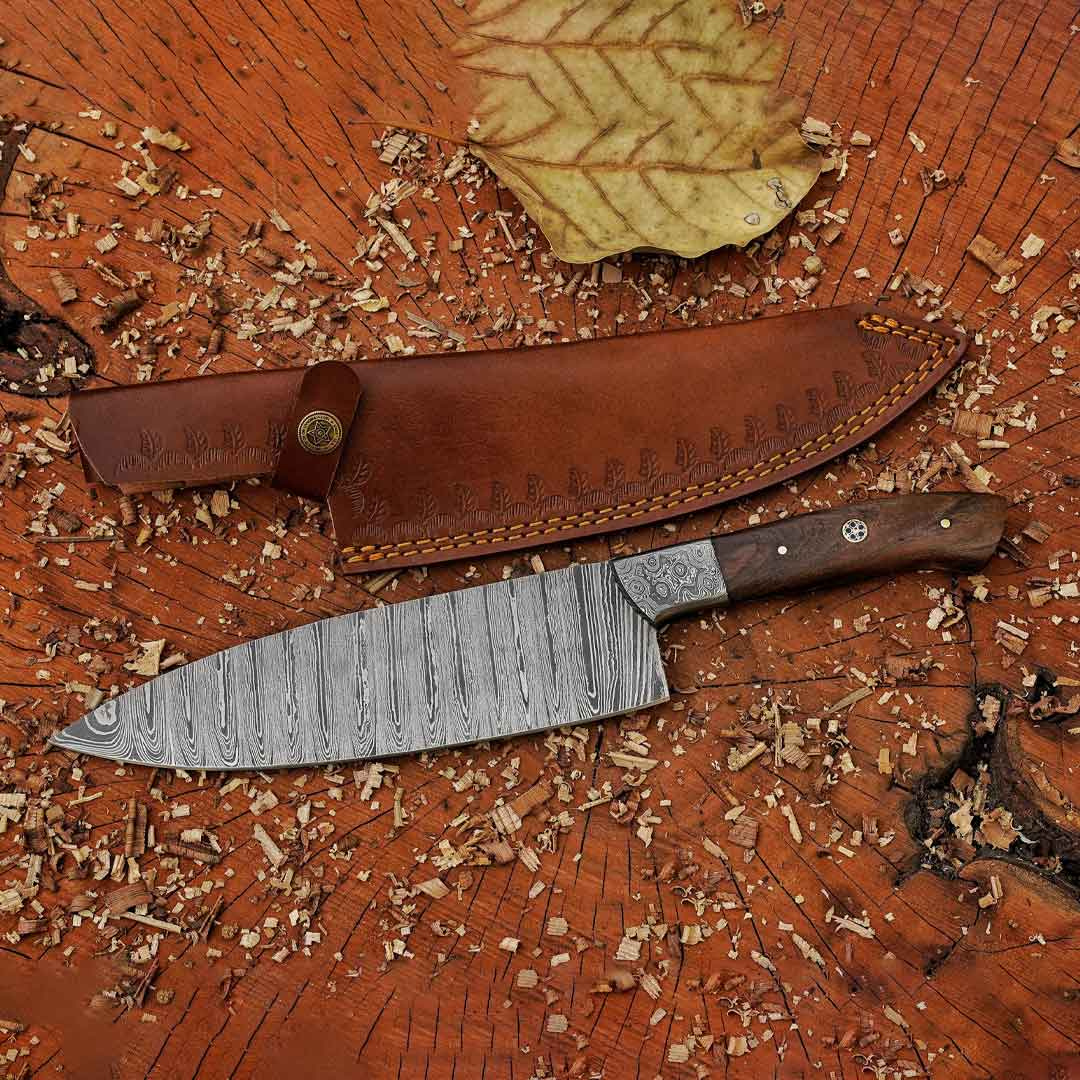Your Cart is Empty
FREE SHIPPING FOR USA

A Damascus knife isn’t just a tool — it’s a combination of artistry, tradition, and cutting power.
But whether you’re camping, hunting, hiking, or fishing, outdoor knife use comes with unique safety challenges.
The right techniques can keep you — and your knife — safe while ensuring your outdoor adventures go smoothly.
In this guide, you’ll learn practical safety tips, maintenance practices, and usage techniques tailored to Damascus steel knives in outdoor environments.
Environmental hazards: Mud, moisture, uneven terrain, and cold can affect grip and performance.
Blade sharpness: Damascus knives are often harder (HRC 58–62), which means they’re extremely sharp but can chip if misused.
Legal & ethical factors: Certain regions have restrictions on blade size or carrying knives in public areas.
Choose the Right Knife for the Task
Hunting: Fixed blade with strong tip
Camping: Multi-purpose survival knife
Fishing: Narrow, flexible blade for filleting
Inspect the Knife
Check for chips, rust spots, or loose handle scales.
Ensure the sheath is intact for safe carrying.
Wear Proper Gear
Non-slip gloves
Belt sheath or secure carry pouch
Rule #1: Control the Blade at All Times
Keep fingers and other body parts out of the cutting path.
Cut away from your body, not toward it.
Rule #2: Stable Cutting Position
Use a flat, non-slip surface whenever possible.
If carving wood or preparing food on uneven ground, brace your workpiece against a stable object.
Rule #3: Avoid Improper Tasks
Don’t use your Damascus knife for prying, hammering, or digging — it can chip the edge or damage the layers.
Clean Immediately
Wipe off moisture, sap, or blood to prevent staining and corrosion.
Use fresh water if needed, then dry completely.
Oil the Blade
Especially important in humid or coastal environments.
Light coat of mineral oil protects the steel.
Sheath with Care
Avoid storing a damp blade in its sheath — leather can trap moisture.
Related: How to Store a Damascus Knife to Prevent Rust and Dulling
Do carry a knife sharpener for extended trips
Do learn one-handed opening/closing if using a folding Damascus knife
Do keep knives out of reach of children
Do follow local knife laws and park regulations
Don’t leave your knife exposed to rain or saltwater without protection
Don’t baton (split) wood unless your knife is designed for it
Don’t store your knife loosely in a backpack without a sheath
Rust Risk: High-carbon layers in Damascus are more vulnerable to corrosion than stainless. Outdoor use demands consistent maintenance.
Grip Security: Natural handle materials like wood or horn can swell or shrink in extreme conditions — make sure your grip is secure.
Pattern Preservation: Rough cleaning with abrasive tools can dull the Damascus pattern; use soft cloths instead.
For outdoor environments, look for:
Full Tang Construction for strength
Stainless Damascus Options for better rust resistance
Ergonomic Handle for long periods of use
Protective Sheath (preferably with drainage holes)
Explore our Damascus Bowie Knifefor field-ready designs.
Q: Can Damascus knives handle wet outdoor conditions?
A: Yes, but they require prompt cleaning and oiling to prevent rust.
Q: What’s the safest way to carry a Damascus knife outdoors?
A: In a fitted sheath attached to your belt or pack, ensuring the blade is fully enclosed.
Q: Is it safe to use a Damascus knife for food prep outdoors?
A: Yes, as long as it’s clean and properly sanitized before use.
Q: How do I prevent slipping when using my knife in the rain?
A: Use gloves with good grip and keep the handle dry.
Q: Should I choose stainless Damascus for outdoor use?
A: If you spend a lot of time in humid or coastal environments, stainless Damascus is a safer choice.